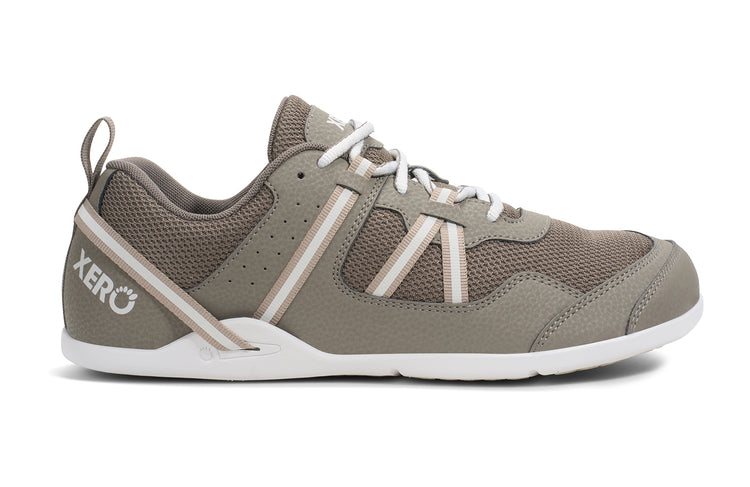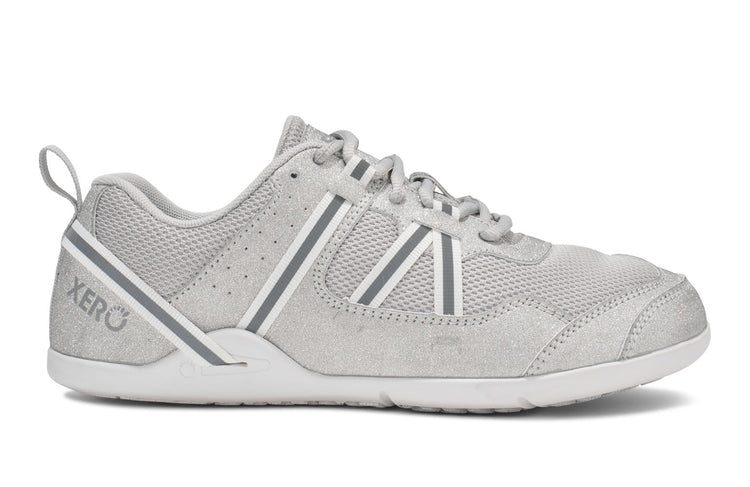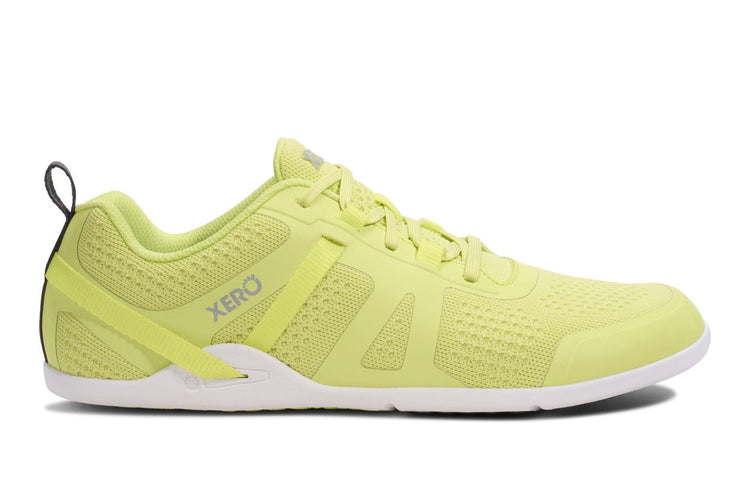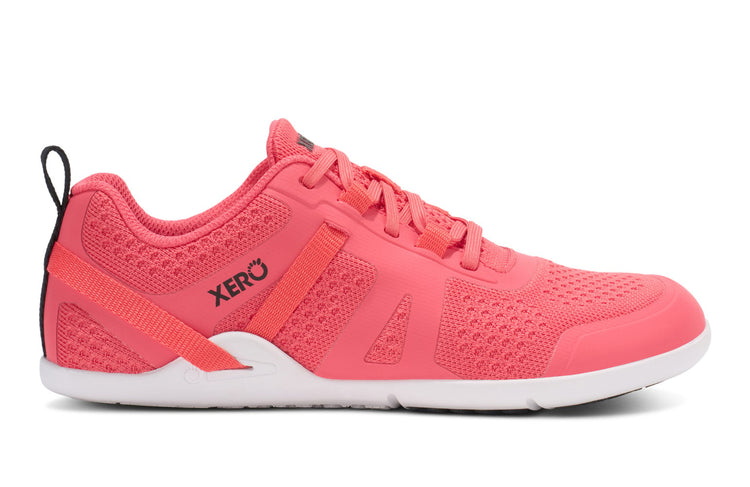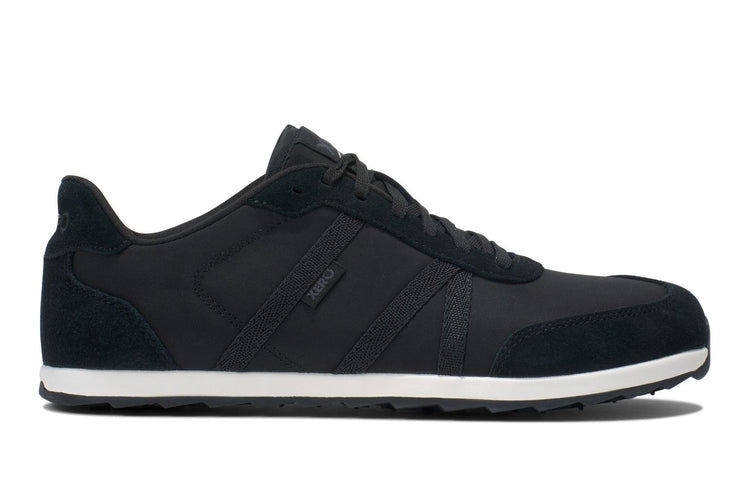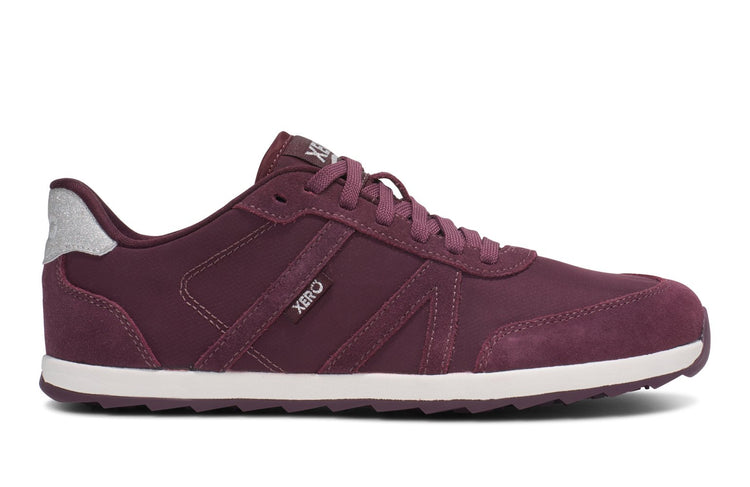Every person should have the opportunity to work on and improve their health and fitness regardless of ability. However, for individuals with disabilities, finding effective ways to work on health and fitness can be more complex. In these circumstances, often what’s needed is a program that caters to each individual’s unique needs and capabilities.
Adaptive fitness supports every individual on their fitness journey. It ensures that those with disabilities can engage in and benefit from physical activity to grow physically, emotionally, and socially.
Improved accessibility in fitness starts with trainers and fitness professionals who can effectively instruct, communicate, and motivate individuals with intellectual and developmental disabilities (ID/DD). Keep reading to learn more about the barriers people with ID/DD face and how adaptive fitness trainers address these challenges.
What Is Adaptive Fitness?
Adaptive fitness is the promotion and implementation of an exercise program specifically tailored for an individual with physical, cognitive, or developmental disabilities. Unlike the traditional one-size-fits-all approach to fitness, adaptive fitness is designed to meet each person’s unique needs, requirements and to fit within their capabilities. This approach to fitness ensures that everyone has access to the health and wellness benefits that come with participating in a fitness program, regardless of their ability.
Why Fitness is Important For Everyone
Studies show that people with ID/DD are not getting fitness opportunities like everyone else. The lack of accessible fitness for people with disabilities has caused health disparities:
-
More than 1 in 4 US adults 18 – 64 years of age has a disability.
-
3 out of 4 disabled people want to be more active. Despite this, only 4 out of 10 disabled people feel they have the chance to be active if they want to be.
-
People with intellectual disabilities (ID) are two times more likely to be obese or have heart disease.
- Only about 10% of people with intellectual disabilities (ID) meet the World Health Organization’s guidelines for physical activity.
There are a few explanations for these discrepancies, and why people with disabilities are not getting the fitness opportunities they deserve like everyone else. A lack of nearby fitness opportunities is one barrier. In addition, there are an inadequate number of physical trainers with the knowledge to work confidently with people living with disability.
Adaptive fitness programs and professionals work to address these issues, bridging the gap and making fitness more accessible to everyone.
Meet The Trainers Who Make Fitness Accessible for Those With Intellectual and Development Disabilities
An adaptive fitness trainer helps guide people with intellectual and developmental disabilities through daily workouts. Here are a few organizations and the people who work with individuals with ID/DD disabilities to help make fitness more accessible.

Autism Fitness Certification and Adapted Fitness and Physical Education programs for the Autism and Special Needs population of all ages and abilities.
Here’s an interview with Eric Chessen, Founder of Autism Fitness:
What is the Reason You Created The Autism Fitness Certification?
“After getting my undergraduate degree in general psychology, I attended graduate school and planned to get a degree in behavioral psychology, planning to go into sports psychology. At that time, one of my classmates worked in a program for teenagers on the spectrum, and they never had an ongoing fitness program. She knew that I was a personal trainer and asked if I would be interested in joining their staff.
As I continued with the program and was contacted by other behavior therapists who wanted to refer clients to me, I had light bulb moments of ‘nobody is doing this’. There were clinical physical therapy guidelines at the time and no best practices approach for fitness for the autism population. As I continued to work with individuals, I realized there needed to be standard approaches for everyone, including myself. That was the spark for developing a methodology, which became the PAC Profile, the standard operating system of Autism Fitness programming and the AF Certification.
The first Pro certification was launched in 2017, and since then I’ve Certified 600 Pros around the world. I’m very thankful for the number of people; however, based on the 1-2% of the total population that is neurodivergent, at minimum, we need more dedicated practitioners to integrate fitness programs into schools, clinics, and homes.”
How Does Movement & Fitness Make a Difference for Those Living With Autism?
“The general benefits of fitness for neurodivergent individuals are the same as for neurotypical individuals—to increase strength, endurance, and stamina, as well as delay or offset muscular atrophy and medical complications like cardiovascular health, diabetes, and high blood pressure.
Into adulthood, exercise becomes necessary as a preventative health measure. The certification teaches people how to develop and implement strength-based fitness programs for individuals with ASD and related neurodiversity appropriately and properly. In addition, many people diagnosed with autism can use fitness to become more independent and do daily activities like taking out the garbage or carrying groceries. If we don’t make a specific effort for these individuals, many of them will not take the opportunity to do so themselves.
The key to fitness programming for those with autism is scalability. If it is scalable, it’s more accessible, meaning there’s a higher success rate regardless of where someone starts physically, adaptively, or cognitively.”
Beyond the Physical Benefits, How Can Adaptive Fitness Help With Cognitive Ability?
“I’d love to give you a straightforward answer to this. Certainly, there are global benefits, but for the autism population, this will vary on a case-by-case basis.
I can’t say specifically, but there is a general benefit of being more alert or aware. Areas of memory and recall, as well as producing language, can benefit. There’s a wide range of neurodivergent populations, so this is a case-by-case basis.”
How Do You Design Different Programs and Workouts to Accommodate One’s Abilities?
“Our program’s operating system is the PAC Profile – the Physical, Adaptive, and Cognitive abilities that should be assessed and addressed to develop programs for an individual or group. As part of the certification, instructors learn how to develop a program around an individual and structure it to their physical capability, motivation, communication, and processing skills. This allows instructors to set goals not only for physical fitness but also for motivation to engage in physical activities and increased ability to follow directions.
I often get the question, ‘what exercises are good for autism?’ While exercises are an essential part of a program, what’s equally important is how they are introduced and implemented. Using the PAC Profile helps introduce each new exercise. We also have standard modifications for exercises as part of the certification. If they can’t do a certain exercise, have them try a modified version that can still help develop movement patterns while not going so far advanced.”
What Do You Hope For The Future Outlook for Adaptive Fitness and Its Role in Society?
“I want it to get the respect it deserves. Historically, I’ve seen a lot of positive attention, and many people will say, ‘oh what you’re doing is awesome’. But just because this program focuses on an under-served audience does not necessarily mean it’s successfully making a difference. I want my work to be judged on its effectiveness, not the population I serve. Programs need a good outcome, and I’d like to see a rigorous standard and practices around this. We’re still in a very early stage of this field, and I feel there’s much more work to do.”
sheSTRENGTH helps your children find joy in fitness through adaptive exercise, working with different diagnoses, triggers, and anxieties.
Here’s an interview with Anna Woods, Founder of She Strength:
What is the Reason You Became an Adaptive Fitness Trainer?
“I became an Adaptive Trainer through my work with the elderly. I designed a dumbbell strength training program for a retirement community and nursing home in the town where we lived. I visited the residents 2-3x a week and led them through this dumbbell program for several years. While working there, an OT contacted me about developing an exercise program for her sister, who had Down Syndrome. I began working with her sister, and in the first year, she lost 80 lbs, was able to go off her blood pressure meds, continued to live independently, and was able to walk on her own again. Because of her results, I was asked to develop fitness/strength programs for the day service provider she attended, and word spread from there. I’ve continued to work with this location and others for the past 17 years.”
How Does Movement Make a Difference for Those Living With Disabilities (and their Families)?
“Movement has the same benefits for people with disabilities as it does for those who don’t, improvement in mental, emotional, and physical strength, as well as improved heart health, bone density, etc. But the benefits are more life-giving to someone living with a disability in that it is a lifeline to his/her independence. Strength and mobility are the difference between being able to transfer oneself in and out of a wheelchair, OR it is the difference between a family member being able to assist a transfer of a loved one in and out of a wheelchair. Movement helps with balance and coordination too, which is needed for working a job, completing daily tasks, and getting in and out of vehicles, etc.”
Beyond the Physical Benefits, How Can Adaptive Fitness Help With Cognitive Ability?
“Adaptive fitness has many benefits for people with cognitive delays, including reducing anxiety, creating focus, helping to organize the brain’s sensory input, calming down high energy, and improving mental health through endorphins being released, etc. Various exercises specifically help with these issues, and as trainers, our job is to make them fun and easy to do, which makes them more effective. Specifically, heavy carries, sled pushes, joint stability exercises for core, eye-hand coordination games, weighted pulls, and rhythmic tapping are just a few.”
How Do You Design Programs and Workouts to Accommodate for Different Abilities?
“I design programs based on our initial conversation and consultation with the client, the caretaker/staff, the parent/guardian, and any physician guidance I provide. I like to know everything I can about the client and his/her diagnoses before we begin. This includes: anxiety triggers, behaviors, medications, prone to seizures, motivations, music style, personality type, interests, what he/she loves to do and hates to do, what his/her home life is like, what access to food and physical activity he or she has on a daily basis, and what rights he/she has to make good healthy choices. From there, I use my intuition and experience to guide a session. I’ve learned over the years that repetition is key from session to session. I’ve learned that “if-then” statements help keep a client on task, and these have to be personal to his/her interests, not mine. Based on his or her physical or cognitive abilities, I apply manageable but challenging exercises to make changes in the body. Many pieces go into designing a program for a client, and from session to session, those plans can change, so an adaptive trainer has to be able to work on the fly.”
What Do You Think the Future Outlook is for Adaptive Fitness?
“I think the future outlook is positive for any trainer interested in working with adaptive athletes. As more parents seek outside resources to help his/her child, more opportunities will abound for trainers to meet their needs. As education and advocacy increase, more trainers will be less intimidated by entering this field of work and be excited and confident to take on this important role in the gym. It’s why volunteering with classes or Special Olympics is important, and it’s why taking courses like mine through the American Council on Exercise about designing programs for Adaptive Fitness is key to continuing to grow this area of personal training and coaching. The more people know, the more they will see it as a HUGE asset to their gym or classroom.”
SMILE (Small Miracles in Life Exist) Mass is an organization that helps families raising children and adults with disabilities enjoy happy, healthy memories through recreation experiences in the New England area.
Here’s an interview with Trevor Fishman, Adaptive Fitness Coach at SMILE Mass:
What is the Reason You Became an Adaptive Fitness Trainer?
“Before becoming an adaptive fitness trainer, I spent a couple years working as a traditional personal trainer, working with a great diversity of clientele: young athletes, elderly couples, and just about everyone in-between.
It was obvious that an advanced exercise my younger athletic clients were doing, like heavy Bulgarian split-squats, was not appropriate for my elderly clients. This was a dilemma for me, as I believe split-squats are a natural human movement, and every able-bodied person should be doing them.
So like any good personal trainer would do, I regressed the movement. My older clients would start with just getting up off the floor by going from a kneeling, to a half-kneeling, to a standing position, using sturdy supports like benches or plyo boxes, and the exercise could be advanced as they developed strength and confidence in the movement.
These experiences taught me that almost every exercise is really just a regression or a progression of a basic human movement. This understanding and attitude towards fitness gave me the confidence to begin working with individuals with disabilities, many of whom require greater levels of adaptation to achieve a productive workout. I eventually transitioned to adaptive fitness full time.”
How Does Movement Make a Difference for Those Living With Disabilities?
“Exercise is one of the most self-rewarding things we can do. It’s right up there with preparing and eating a nutritious meal, or getting a good night’s sleep. It’s something we do for ourselves that inherently makes us feel good.
Individuals with disabilities reap all the same physical and emotional benefits of exercise as typical folks. These can include increased muscle mass, improved mobility, better cardiovascular health, more balanced blood sugar levels, reduced emotional stress and anxiety, and a general feeling of happiness from endorphin release.
For individuals who engage in self-stimulatory behaviors, exercises like running, jumping, and bouncing (on yoga or bosu balls) offer sensory stimulation that can reduce self-stimming. For people with physical disabilities, exercise can increase the strength and mobility required to perform daily acts of living (bathing, toileting, changing, etc.). General movement and specific stretches can also relieve and improve symptoms of chronic constipation, which disproportionately impacts people with disabilities. Some research suggests exercise can reduce the frequency of seizures in individuals with epilepsy, provided the exercise is of a low to moderate intensity and doesn’t cause overheating.”
Beyond the Physical Benefits, How Can Adaptive Fitness Help With Cognitive Ability?
“If you’ve ever listened to the Huberman Lab Podcast, you probably know that the hippocampus is the part of the brain responsible for learning, working memory, and executive functioning. Exercise has been shown to significantly increase the size of the hippocampus.
I see this firsthand with my clients who come into the gym only able to perform basic one-to two-step exercises but progress to more complex, multi-step exercises. For example, if a client comes in with strong natural jumping ability, they will first learn to hop over hurdles, box jump, and broad jump separately, but eventually, all three movements will be combined into a fun and stimulating exercise that almost looks like an obstacle course.”
How Do You Design Different Programs and Workouts to Accommodate One’s Disabilities?
“I first assess my clients and figure out what they are physically able to do, and cognitively able to understand. I then bridge that gap, so my clients can build a mind-muscle connection and learn to generate the movements I’m asking of them.
For someone with cognitive disabilities who is able-bodied, I offer clear and concise directions, and may continue to remind them of the task after each repetition. I also use physical cues when necessary to remind clients of where they are in space, and which arm or leg they should be using.
For individuals with physical disabilities, accommodations are made to maintain safety throughout the workout. For example, if someone is not able to sit independently on a box or bench, support is offered so the person still has the opportunity to get out of their wheelchair and enjoy the postural benefits.”
What Do You Hope For The Future Outlook Of Adaptive Fitness and Its Role in Society?
“I think when many people hear this term, they think of wheelchair basketball games or the Special Olympics track competitions. These are great recreational opportunities which encourage movement, teamwork, and sportsmanship.
That said, these programs are not appropriate for everyone with disabilities and are typically only offered seasonally. I think more and more fitness professionals are recognizing the importance of providing individualized training sessions for persons with disabilities on a regular basis.”
Inspirational Special Needs Athletes
These athletes didn’t let a disability prevent them from reaching their goals. Here are a few inspirational athletes who overcame their disabilities to accomplish incredible feats, and are excellent advocates for adaptive fitness.
Marla Runyan
Marla Runyan hasn’t let Stargardt’s Disease prevent her from incredible career accomplishments in both sprints and field events, as well as long distance running. Marla won five gold medals and one silver medal in the Paralympics, and she became the first legally blind athlete to participate in the Sydney Olympics.

Jim Eisenreich
Jim Eisenreich is a former Major League Baseball player who has faced multiple challenges with Tourette’s Syndrome throughout his career. Early in his career, Jim decided to leave baseball due to his uncontrollable tics, unsure whether he would ever play again. However, he made a triumphant comeback to the sport and had a remarkable 17-year career.

Alex Roca Campillo
Alex Roca Campillo is a professional runner with cerebral palsy (CP), and the first person with a 76% disability to complete a marathon. To date, he’s competed in five triathlons and six half marathons. He has defied the odds, and inspires the world to think differently about disabilities.

Jessica-Jane Applegate
Jessica achieved remarkable success despite her autism diagnosis during secondary school. She did not let her diagnosis stand in the way of her dreams. She has won seven medals in swimming at various Paralympic events including a gold at London 2012.

Justin Gallegos
As a professional runner, Justin Gallegos does not let cerebral palsy interfere with his training. He won a gold medal in the 400 meters in the Paralympics-Ambulatory division at the California State Track & Field Championships in 2016.

Jonathan Stoklosa
Jonathan is an inspirational powerlifter born with Down syndrome. Having started talking at age 11, he began weightlifting shortly after, at age 12, with his two brothers. Despite being the youngest and lightest participant, Jonathan won the bench press at 1999 Special Olympics World Games. He also went on to win multiple gold medals at the 2010 and 2014 USA Games.

The Future Outlook of Adaptive Fitness
There’s a massive need for adaptive fitness professionals, opportunities, and programs. While the industry is growing and evolving, there is a gap between the number of people with physical or cognitive disabilities and the number of qualified individuals who can deliver fitness instruction.
How Barefoot Shoes Help With Adaptive Fitness
For those with disabilities, finding the right shoe will be helpful for adaptive fitness. Here’s why minimalist-style shoes could be a great option.
Lightweight and Flexible
Barefoot shoes are designed to be lightweight and easy-to-wear, which could help people with disabilities. Shoes that are lightweight and flexible make it easier to move around, and may reduce the chances of tripping compared to wearing heavier, conventional shoes.
Natural Comfort
Barefoot-style footwear provides natural comfort during a workout, but not in the way you may think. The minimal design means your feet act as their own support system. Xero Shoes have wider toe boxes that allow your toes to spread out and relax.
Balance
For those with disabilities that affect balance, like cerebral palsy, barefoot shoes have features that could help improve your balance. Xero Shoes provide ground feedback which improves communication between your brain and feet, resulting in better stability and agility for some. Shoes with a wide toe box allow the toes to spread which also promotes improved balance. The non-elevated heel (“zero-drop”) allows your feet to be lower to the ground, further enabling balance.
Mobility
Our feet are the foundation for mobility. Those with disabilities can experience mobility issues, so the choice in footwear is important. Compared to conventional shoes, minimalist shoes are designed for natural movement, which could promote better balance, gait, and posture. The flat, thin sole may also help prevent tripping and falling. Better mobility is key to maintaining independence.
Sensory Issues
Those with sensory issues may have sensitive feet and will be particular about what they find comfortable. A barefoot-inspired shoe will feel less constrictive and may appeal more to people who struggle with physical comfort.
What Customers Are Saying…
About barefoot shoes and footwear for all lifestyles and how they could help those with disabilities.
“I bought these for my teenage son who has high functioning autism. Needless to say he is particular about what he wears. I took him shoe shopping in September and we finally found shoes that were “okay”. FYI my son has worn said shoes twice in almost four months. I had been reading about Xero shoes and how good they were. So I decided to try Xero shoes for him. He wears them almost every day! He likes the look of them, I have never had to say “Go put on your new shoes” as they had almost no breaking in time, and they are naturally wide enough for his feet. Until reading about Xero shoes, I didn’t understand why his feet were so wide to begin with. It’s because he’s never liked wearing shoes. He has always preferred barefoot and now I know why…because it’s natural! Thank you so much. I’m glad I took the gamble on Xero shoes!”
“This is my Son’s second pair of Prios! He loves them and are the only shoes I can get him to wear. He has Mitochondrial Disease and as a result has autism and sensory processing disorder among other pressing medical issues. Other shoes drove him into issues. He has actually fallen asleep with the Prios on and not even realized it! His first pair would not be given up until I ordered him the exact same shoe! The uppers were warn down and the sole started to fall off of the old pair after Just over two years of almost constant wear! These shoes have hiked md rocky challenging trails of western PA with my son’s 25 pound backpacking pack. They have given him a chance to experience the world feet first without the worry of cut up feet;) thank you! By the way Xero shoes, if you want Jonah’s old pair for analysis, let me know. He will not let me throw them away!!!!!”
“I purchased this boot for my daughter who has cerebral palsy and utilizes a wheelchair. Her CP causes her toes to curl. This makes getting a typical shoe on difficult. Typical shoes also cause sores on her feet. The Xero shoe (this is her 4th pair of a variety of Xero shoes) with it’s wide toe box alleviates both these issues. This boot also keeps her feet warm which is always an issue during an Iowa winter.”
“I have Spina Bifida, and because of that I have mobility issues. I trip on most shoes, especially anything with a thick sole. I tend to be barefoot as much as possible, because that makes it easiest for me to walk without falling. The only problem is that there are many places where I have to wear shoes. These are awesome! It’s like being barefoot with protection for my feet. As a woman with pretty large feet, I also appreciate that you offer ‘girly’ colors in large sizes. I have finally found a pair of shoes that help me walk and make me feel cute!”
A special thank you to our contributors, Trevor, Anna, and Eric!

Anna Woods
Anna is the founder of sheSTRENGTH, and is a Full-Time Trainer owning 2 locations in Central Kansas, providing customized online and in-person training for women and youth of all ages and abilities.
Facebook | Instagram | Website
Trevor Fishman
Trevor is an adaptive exercise coach and trainer at SMILE Mass, working with young adults with disabilities in Massachusetts.
Facebook | Instagram | Website
Eric Chessen
Eric has worked extensively with individuals with developmental disabilities with specific focus on young individuals (4-21) with autism spectrum disorder. He founded Autism Fitness, which focuses on the physical fitness needs of individuals with autism.
The content of this post does not constitute and is not intended to be a substitute for professional medical advice, diagnosis or treatment. Always seek the advice of a physician or other qualified health provider with any questions or concerns you may have about your health or a medical condition.
Post Affiliate Pro Frequently Asked Questions
Xero Shoes is no longer accepting affiliates into Post Affiliate Pro. Please see the information above about joining our program through another channel.




